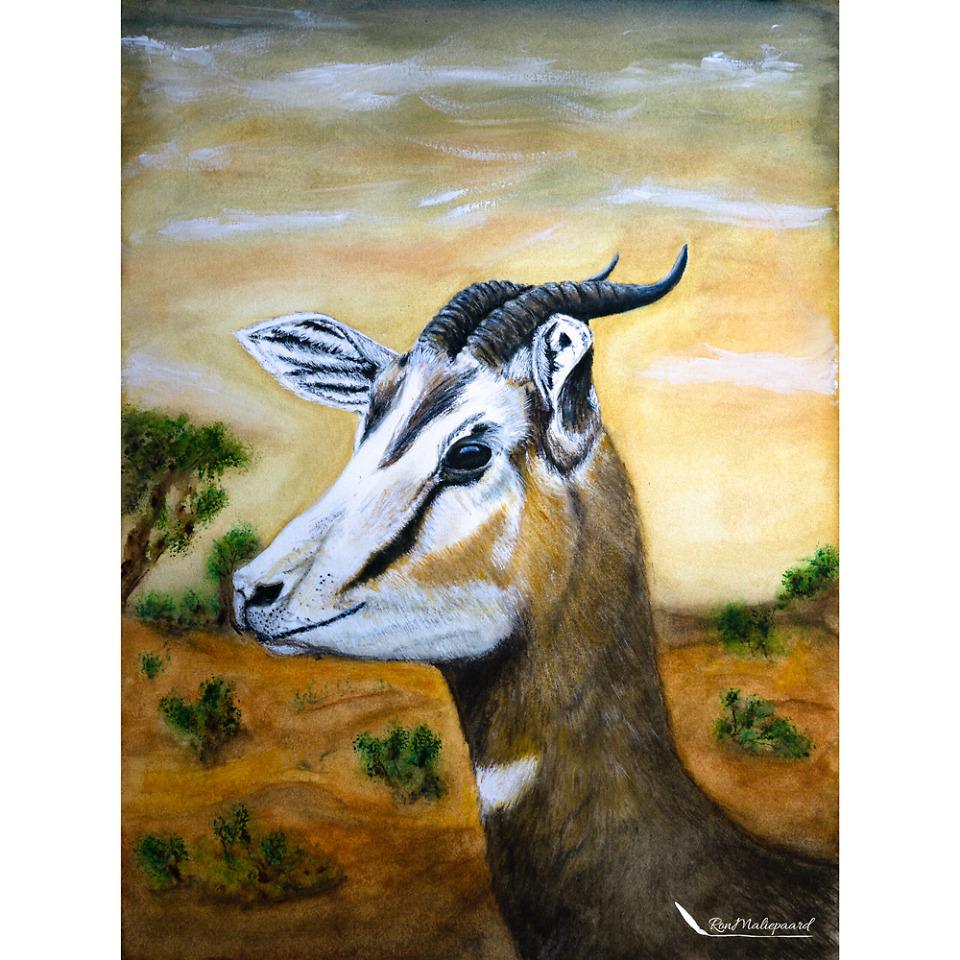Big, but small in number…

Cotman watercolours tubes, Faber Castel Polychromos & Pastel pencils, Posca felt tip pen on Saunders Waterford 300gsm 310×230 Cotton Satiné High White paper
It looks like a typical antelope, but is the largest gazelle species. But it is also one of the most endangered gazelle. The Mhorr gazelle (Nanger dama mhorr) has been labeled as extinct in the wild since 1968. But because zoos have set up a breeding program, the Mhorr gazelle is now back in the wild. They only have 2 calves after a gestation of 7 months, so the increase is not very fast. Releasing animals that have only lived in captivity (zoos) is difficult. For example, they have trouble recognizing predators and the first group to be released was quickly decimated by dogs. They also suffer from poaching a lot.
They are native to North Africa, Morocco, Senegal and Sudan. There they live in the open arid landscapes (desert and Sahara) in herds of 5 to 25 heads. To find enough food they have a nomadic lifestyle.
I saw this male with his beautiful striking horns in a kind of S-shape in Rotterdam Zoo (aka Diergaarde Blijdorp) with a small pack of females. I really liked the color and shape of him and immediately thought it would be a nice painting subject. I took a picture as reference. But I didn’t like to use the zoo environment as a background and so I made a kind of Sahara background.
